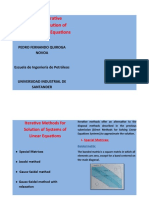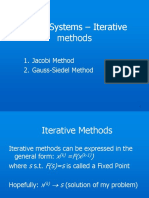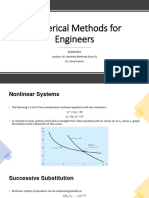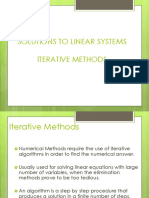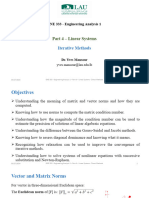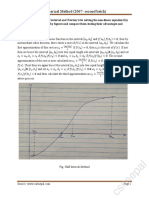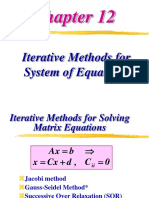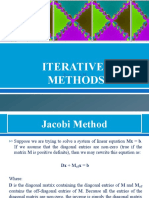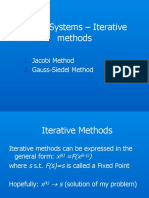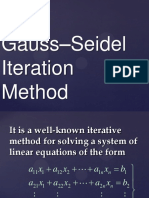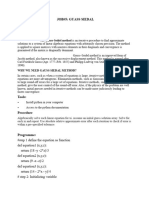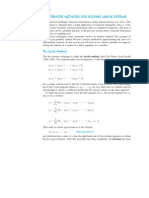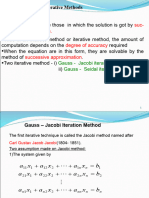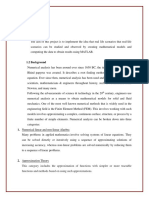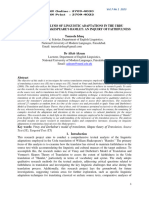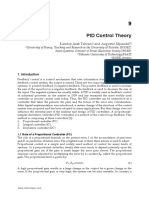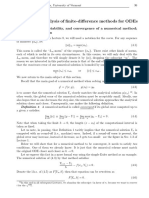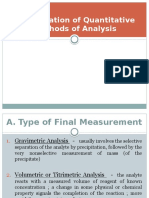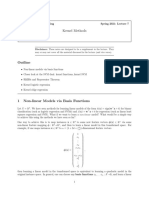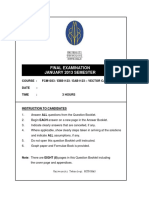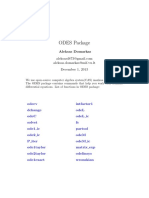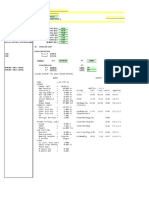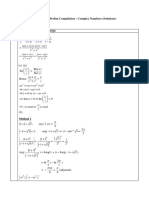0% found this document useful (0 votes)
44 views21 pagesIterative Methods Iterative Methods: Prof. Hae Prof. Hae - Jin Choi Jin Choi
This document discusses iterative methods for solving systems of linear and nonlinear equations. It introduces the Gauss-Seidel and Jacobi methods, which are iterative techniques for solving linear systems. The Gauss-Seidel method updates each variable using the most recent values, while Jacobi uses the previous iteration's values. Convergence is assessed by the relative change between iterations. Diagonal dominance helps ensure Gauss-Seidel converges. Relaxation can improve convergence by combining old and new variable values. Nonlinear systems can also be solved iteratively by successive substitution or Newton-Raphson. An example demonstrates applying Gauss-Seidel to a 3x3 system.
Uploaded by
Holman Orlando Vargas SalazarCopyright
© © All Rights Reserved
We take content rights seriously. If you suspect this is your content, claim it here.
Available Formats
Download as PDF, TXT or read online on Scribd
0% found this document useful (0 votes)
44 views21 pagesIterative Methods Iterative Methods: Prof. Hae Prof. Hae - Jin Choi Jin Choi
This document discusses iterative methods for solving systems of linear and nonlinear equations. It introduces the Gauss-Seidel and Jacobi methods, which are iterative techniques for solving linear systems. The Gauss-Seidel method updates each variable using the most recent values, while Jacobi uses the previous iteration's values. Convergence is assessed by the relative change between iterations. Diagonal dominance helps ensure Gauss-Seidel converges. Relaxation can improve convergence by combining old and new variable values. Nonlinear systems can also be solved iteratively by successive substitution or Newton-Raphson. An example demonstrates applying Gauss-Seidel to a 3x3 system.
Uploaded by
Holman Orlando Vargas SalazarCopyright
© © All Rights Reserved
We take content rights seriously. If you suspect this is your content, claim it here.
Available Formats
Download as PDF, TXT or read online on Scribd
/ 21





